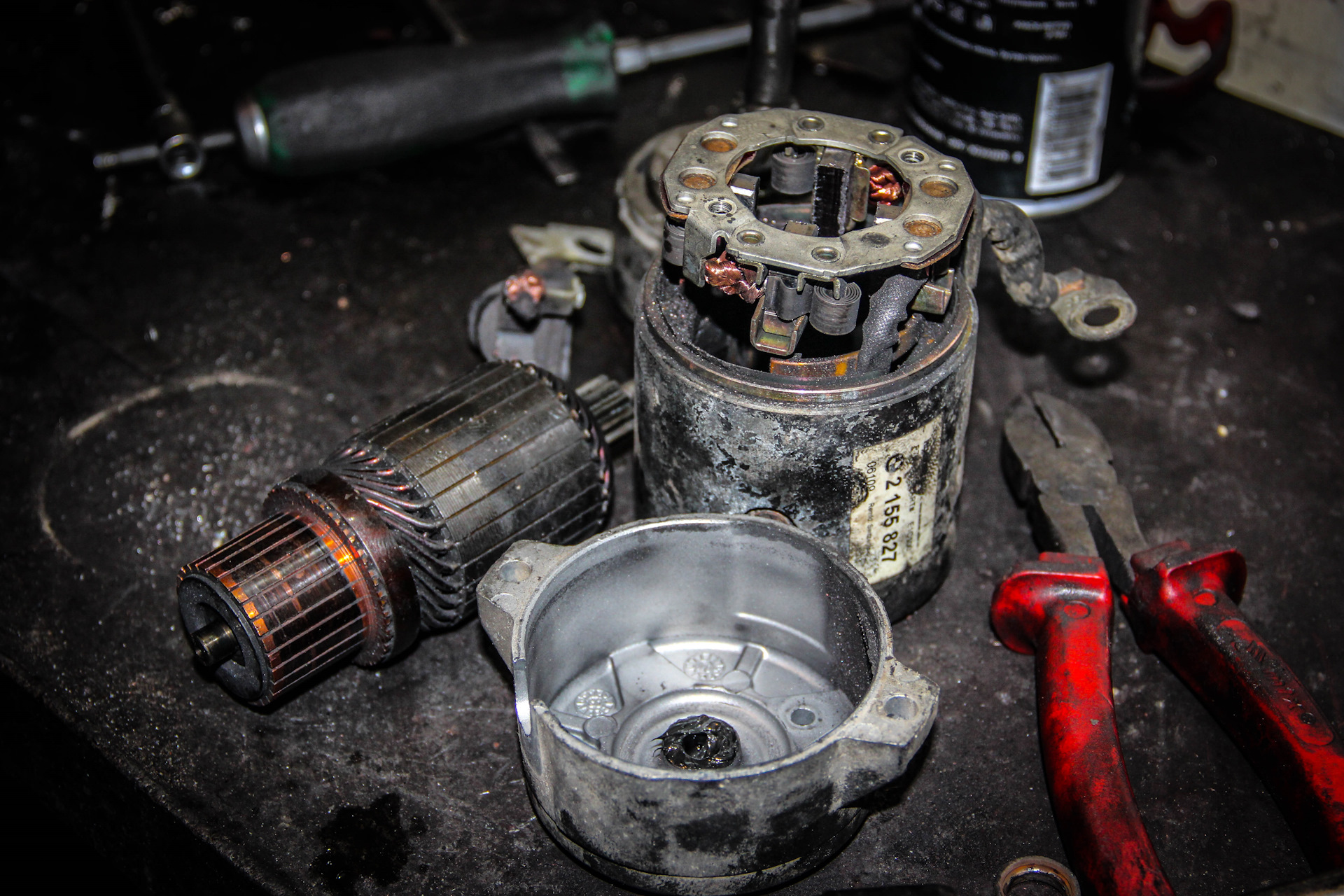CAUSES OF DIFFICULTIES WHEN STARTING ICE
Starting a serviceable engine is a matter of 3-5 seconds, both hot and cold. If you have to turn it longer, then, most likely, not all systems are working. Sources of problems can be:
Battery. A confident start of the motor is unlikely to be possible if the battery is discharged. True, for a long time to turn the starter in this case will not work.
Starter. But in case of starter malfunctions - very much so. Especially when the brushes or the retractor are worn out.
Ignition system. Increased clearance and malfunctions of candles, interruptions in the operation of ignition coils, breakdowns of high-voltage wires.
Fuel system. Insufficient pressure in the rail, malfunctions of the pressure regulator, fuel pump, air in the line.
Catalyst. Problems in the catalytic converter: clogging or caking of the cells can lead to an obstruction in the exhaust system and, as a result, difficulties in starting the internal combustion engine.
Piston and valve groups. Low compression, unadjusted valves, incorrect valve timing lead to difficulties in the operation of the internal combustion engine, including during start-up.
Motor oil. Untimely replacement (exceeding the service life), improper selection of oil lead to excessive grease density and difficulty in cranking the engine during start-up.
Fuel. Refueling with low-quality or unsuitable brand fuel often causes problems with engine operation.
Filters. Dirty filters - fuel and air
Electronic sensors. The failure of the sensors, on the readings of which the operation of the ECU (engine control unit) depends, directly affects the problems when starting the internal combustion engine.
Electrical contacts. The lack of contact in the circuit all the way from the battery to the starter and from the computer to the spark plugs and injectors will put an end to attempts to start the engine. The reason may be loose or oxidized terminals, blown fuses, broken wires.
Anti-theft agents. Start attempts can block car alarms, immobilizers and other devices that are not disabled in normal mode or are faulty.
Other reasons can also prevent the engine from starting, sometimes quite exotic - for example, a foreign object resting on the flywheel. After several (two or three) unsuccessful attempts, it is advisable to check the entire list and fix the problem.
WHAT CAN BE DAMAGED BY RUNING THE ENGINE FOR LONG

Like any other emergency situation, a prolonged engine start is unsafe for the car. If you turn the engine with a starter for too long, you can:
put the battery in - the starter consumes a very considerable current during rotation;
overheat the starter itself and, as a result, get problems with its filling: winding, brushes, bearings;
damage the bendix (starter gear that rotates the flywheel);
fill the spark plugs with gasoline, thereby rendering them inoperable;
damage the catalyst: fuel not burned in the cylinders will enter the converter in too much quantity, which can lead to sintering of the honeycombs.
In addition, a long load at startup can lead to burning of contacts, failure of the relay and ignition switch.
RECOMMENDATIONS FOR STARTING THE ENGINE
A few tips to help facilitate starting, and therefore reduce starter rotation time:
when starting, do not rush to turn on the starter, wait a few seconds with the “ignition” key position so that the gas pump has time to pump fuel (the advice is relevant for injection cars at normal (not extremely low) air temperature;
on carbureted cars, pump the gas pedal 3-4 times before starting;
start diesel cars after the glow plug indicator lamp goes out;
on vehicles with a manual transmission in cold weather, depress the clutch when starting;
turn off all electrical consumers (headlights, multimedia, air conditioning, etc.) before starting to facilitate battery operation;
monitor the level of fuel in the tank;
do not park, do not turn off the car on a steep slope;
change consumables in time: filters, candles, oil;
keep track of the technical condition of the car.